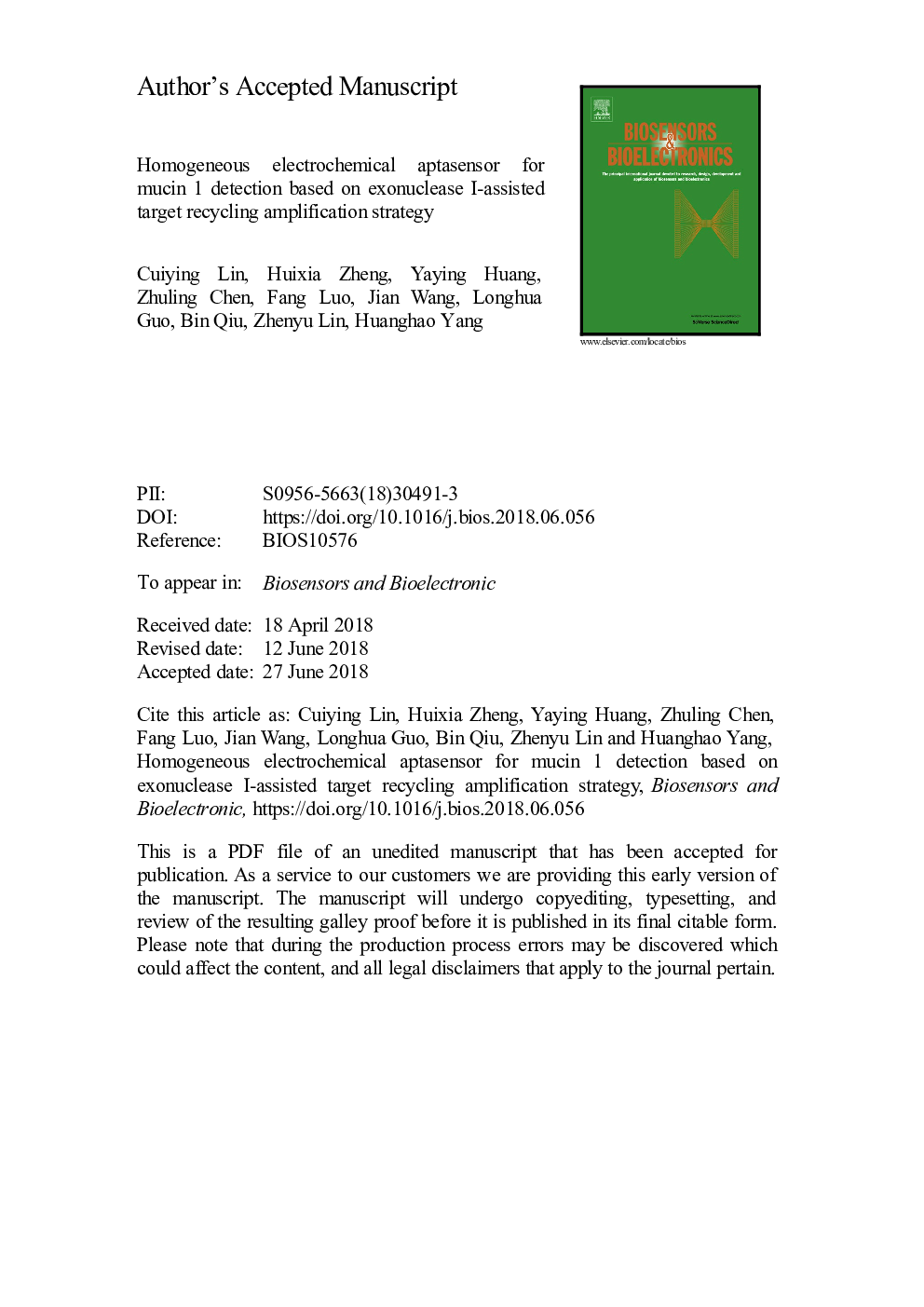| Article ID | Journal | Published Year | Pages | File Type |
|---|---|---|---|---|
| 7229070 | Biosensors and Bioelectronics | 2018 | 28 Pages |
Abstract
A sensitive and homogeneous electrochemical aptasensor was fabricated for the detection of mucin 1 (MUC1) by combining a well-designed DNA bulge-loop (L-DNA) structure with high-efficient exonuclease I (Exo I)-assisted target recycling amplification strategy. The L-DNA probe was constructed via the hybridization of the MUC1 aptamer and methylene blue (MB) labeled complementary DNA (cDNA) (cDNA-MB) and hence could not diffuse freely to the negatively charged ITO electrode surface due to the strong electrostatic repulsion, so small electrochemical signal was detected. The addition of MUC1 caused the dissociation of L-DNA structure due to the specificity between aptamer and MUC1. Then Exo I was implemented to digest the released cDNA-MB into mononucleotides and then produced short MB-labeled mononucleotides fragments (MB-MFs). As the MB-MFs contained few negative charges, it diffused easily to the negatively charged ITO electrode surface and resulted in the enhanced electrochemical signal. Meanwhile, the MUC1-aptamer complex was also specifically digested by Exo I, resulting in the liberation of MUC1 and hence realized the target recycling and then caused the amplification of the electrochemical signal. The enhanced electrochemical signal has a good linear relationship with logarithm of MUC1 concentration in the range of 1.0â¯pgâ¯mLâ1-50â¯ngâ¯mLâ1 with a limit of detection of 0.40â¯pgâ¯mLâ1 (S/Nâ¯=â¯3). Additionally, the fabricated aptasensor has been successfully applied to detect MUC1 in serum samples with satisfactory results and thereby it exhibits great potential in the practical application of clinical diagnosis.
Related Topics
Physical Sciences and Engineering
Chemistry
Analytical Chemistry
Authors
Cuiying Lin, Huixia Zheng, Yaying Huang, Zhuling Chen, Fang Luo, Jian Wang, Longhua Guo, Bin Qiu, Zhenyu Lin, Huanghao Yang,
